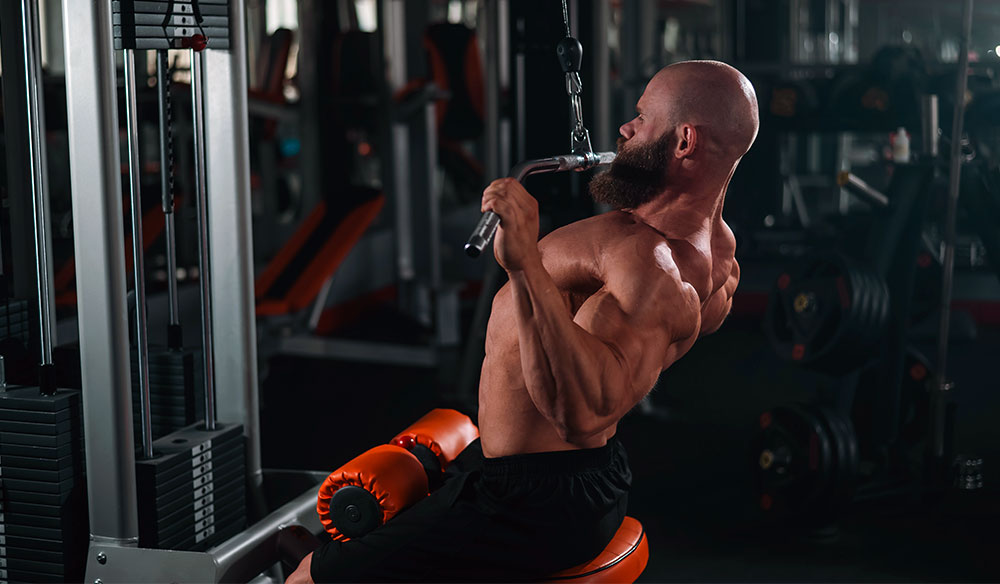No products in the cart.

How to Maintain Muscle After a Steroid Cycle
One of the most challenging aspects of using anabolic steroids is maintaining the muscle gains achieved during the cycle once the compounds clear your system. The transition from enhanced to natural hormonal status represents a critical period where inadequate planning can result in significant muscle loss, strength decline, and frustration that undermines months of dedicated training. After a cycle of Testosterone Enanthate, a comprehensive stack, or powerful compounds like Trenbolone, this guide provides evidence-based strategies for preserving your hard-earned muscle tissue through the post-cycle transition.
Implementing Effective Post-Cycle Therapy (PCT)
The foundation of muscle retention after a steroid cycle rests on properly executed post-cycle therapy designed to restore natural testosterone production as quickly as possible. During enhanced cycles, exogenous androgens suppress the hypothalamic-pituitary-gonadal (HPG) axis through negative feedback, essentially shutting down your body’s natural hormone production. Studies demonstrate that without intervention, natural testosterone recovery can take 6-12 months or longer, creating an extended hypogonadal state where muscle loss becomes inevitable. Strategic PCT dramatically accelerates this recovery, typically restoring function within 4-8 weeks. Clomid and Nolvadex represent the most widely used SERMs, with research supporting their effectiveness in restoring testosterone production.
Essential PCT protocol components include:
- Timing initiation correctly based on compound half-lives, wait 2-3 weeks after last injection of long esters like Testosterone Cypionate or Deca Durabolin, but only 3-4 days after short esters like Testosterone Propionate
- Using appropriate SERM dosing to stimulate natural production without excessive estrogen blockade
- Supporting natural testosterone with HCG during the final weeks of the cycle to maintain testicular function
- Managing estrogen levels carefully with products from our AE/PCT category, as some estrogen proves essential for proper recovery
- Monitoring bloodwork at 4-6 weeks post-cycle to verify hormonal restoration
Strategic Training Adjustments for the Post-Cycle Period
Training modifications during PCT and the immediate post-cycle period prove equally critical as pharmaceutical interventions for muscle preservation. The dramatic shift in hormonal environment, from supraphysiological androgen levels to temporarily low testosterone, fundamentally alters recovery capacity, training tolerance, and anabolic signaling. Attempting to maintain on-cycle training volume and intensity during this vulnerable period almost guarantees overtraining, elevated cortisol, and accelerated muscle loss. Research in the Journal of Strength and Conditioning Research indicates that training stress that was productive during enhanced states becomes counterproductive when hormonal support vanishes.
The primary training objective during PCT shifts from progression to preservation. Rather than pushing for new personal records or increased volume, focus on maintaining strength on core compound movements while managing total training stress carefully. Reduce overall training volume by approximately 30-40% compared to on-cycle levels, achieved through fewer total sets per muscle group and potentially eliminating some assistance exercises. However, maintaining intensity, the percentage of your one-rep max, proves crucial for sending signals that existing muscle tissue remains necessary. Studies show that training intensity correlates more strongly with muscle retention than volume during reduced-calorie or hormonally compromised states.
Optimal post-cycle training strategies include:
- Prioritizing compound movements (squats, deadlifts, bench press, rows) that recruit maximum muscle mass
- Reducing training frequency from 5-6 days weekly to 3-4 days with complete rest days between sessions
- Maintaining rep ranges in the 5-8 range for primary exercises to preserve strength-focused adaptations
- Eliminating excessive isolation work and high-volume techniques like drop sets that accumulate fatigue
- Extending rest periods to 3-5 minutes between heavy sets to ensure full recovery
- Monitoring performance carefully and accepting temporary plateaus without panic
Nutritional Optimization: Fueling Recovery and Retention
Nutritional strategy during and after PCT represents your most powerful non-pharmaceutical tool for muscle preservation. The temptation to cut calories immediately post-cycle proves particularly destructive, as the combination of caloric restriction and reduced hormonal support creates the perfect storm for muscle catabolism. Research in the American Journal of Clinical Nutrition demonstrates that protein requirements increase during periods of hormonal suppression, with enhanced athletes potentially requiring 1.2-3.3 grams per pound of bodyweight to maintain nitrogen balance, significantly higher than the 0.8-1.0 grams typically sufficient during enhanced states.
Critical nutritional priorities include:
- Protein intake of 1.2-1.5g per pound bodyweight distributed across 4-5 meals to maintain positive nitrogen balance and provide constant amino acid availability
- Carbohydrate support around training to fuel performance, support recovery, and maintain training intensity that signals muscle retention necessity
- Caloric surplus of 200-500 calories daily for the first 4-6 weeks post-cycle, transitioning to maintenance as hormones normalize
- Strategic supplementation including creatine monohydrate (5g daily), which maintains cell volumization and supports strength independent of hormonal status
- Essential fatty acids from sources like fish oil to support hormone production and manage inflammation
Some athletes incorporate SARMs like MK-2866 or LGD-4033 during PCT to provide mild anabolic support while natural production recovers. While this approach may help preserve muscle, it extends suppression and delays complete hormonal recovery. Most experts recommend completing full PCT before considering any additional compounds. Alternatively, MK-677, a growth hormone secretagogue that doesn’t suppress testosterone, can support recovery and appetite during PCT without interfering with hormonal restoration.
Conclusion: Long-Term Perspective on Sustainable Enhancement
Effective PCT using compounds like Clomid and Nolvadex from our AE/PCT category restores natural testosterone production, intelligent training adjustments manage stress during vulnerable hormonal states, and aggressive nutritional support provides the building blocks necessary for preservation. For personalized guidance on PCT protocols, transition strategies, and optimizing your approach to sustainable enhancement, contact our knowledgeable team at Forza Pharma for expert consultation tailored to your specific compounds, cycle length, and individual recovery characteristics.


